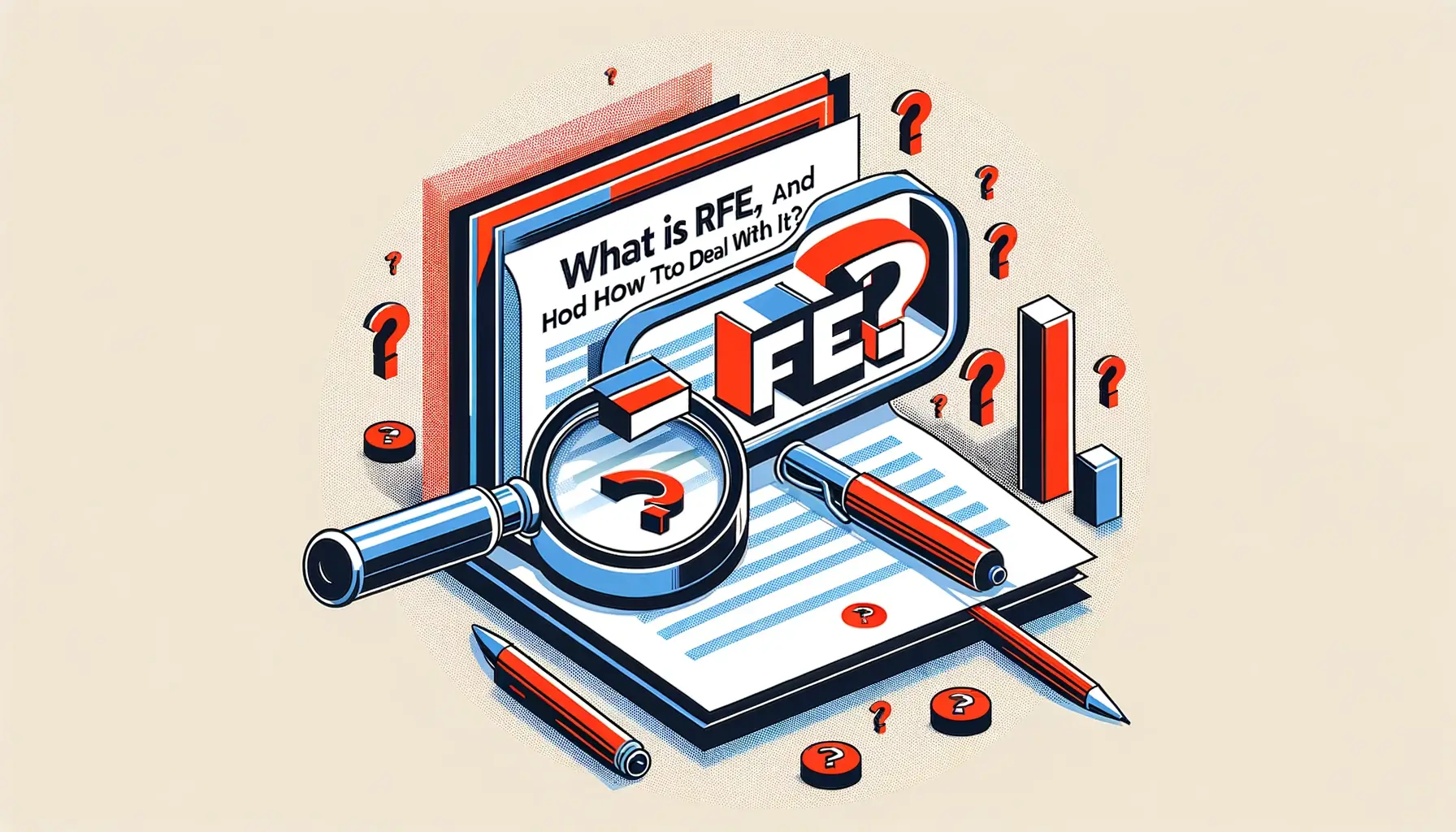
Introduction
Crafted by Alex C and further honed by the Goelite team
In this article, I share my journey as a graduate in social sciences (non-STEM) from a U.S. institution, grappling with the complexities of the OPT and CPT programs in my quest for the H1B visa.
This guide, divided into three insightful sections, aims to shed light on the complex process of handling RFEs, offering strategic advice based on my experiences. It acts as a reliable guide for individuals facing similar challenges, leading them through the complexities of the immigration system.
👉 Section 1 - Preparing for Potential RFEs
👉 Section 2 - Advice for Day 1 CPT Students
👉 Section 3 - Common RFE Pitfalls and How to Avoid Them
Preparing for Potential RFEs
Among the fortunate 26% who succeeded this year, RFEs may have cast a shadow on your victory. It's speculated that RFEs have become more challenging. If fewer applicants withdraw than expected, USCIS might adjust the odds by increasing RFE denials.
Facing an RFE requires more than just relying on your company's legal team. Often, the outcome hinges on how well you understand and respond to the RFE. Here's a breakdown of common RFE reasons and how to effectively address them:
- 1. Specialty Occupation: This is a common challenge, especially for arts and commerce graduates, as many such professions are considered generalist. To prove your job matches your qualification, you need to demonstrate that your undergraduate degree is directly related to your job. Immigration authorities typically consider:
- The U.S. Department of Labor’s Occupational Outlook Handbook description of the job.
- Industry standards for similar roles in similar-sized companies.
- Your company’s historical requirements for the position.
- How your role is uniquely complex within the company
Strategy: An Expert Opinion Letter can be instrumental in demonstrating the specialized nature of your role.
- 2. Maintenance of Status: This involves proving the legality of your CPT and OPT usage. Choosing a reputable educational institution is crucial.
Strategy: Prepare a comprehensive record of your academic and professional activities to substantiate your status maintenance.
- 3. Employer-Employee Relationship: This question asks whether you are genuinely employed by the company.
Strategy: Provide contractual evidence and documentation of your employer's supervision and management.
- 4. Beneficiary Qualifications: Broad or generalist degrees can be a red flag.
Strategy: Highlight the relevance of your academic background to your job, especially if it aligns with your major.
- 5. Availability of Work (On-site):The need for your role in the company and sufficient workload to justify an H-1B visa is crucial.
Strategy: Collect evidence demonstrating the necessity of your position within the company.
- 6. Licensure Requirements: Some professions undeniably require specific licenses, such as engineering, accounting, or architecture.
Strategy: If applicable, obtain and provide the necessary professional licenses.
- 7. Company Address/VIBE: This often results from outdated company information in the immigration services' database.
Strategy: Simply update the relevant information.
- 8. LCA Correspondence to Petition: The Labor Condition Application (LCA) details must match the information in the H-1B petition.
Strategy: Ensure consistency in the information provided and explain any discrepancies to the immigration authorities.
- 9. Availability of Work (Off-site): This is less applicable to most applicants but is common among outsourced employees, often concerning whether there is enough long-term work for them.
Strategy: Collaborate with your lawyer and company to provide detailed work arrangements and evidence of long-term tasks.
Section 2: Day 1 CPT and RFEs
RFEs require detailed documentation. Start preparing early to have a robust response.
- 👉 From your institution:
- Official letters, attendance reports, CPT agreements, enrollment verifications, transcripts, academic records, and tuition records.
👉 From your employer:
- Job descriptions, offer letters, and salary information. Ensure consistency if your official status is part-time but you're working full-time.
👉 Personal documentation:
- ll your I-20 forms, transportation proofs to school, parking tickets, fuel receipts, course syllabi, academic work samples, school website program descriptions, email communications, and proof of address.
Related articles:
Section 3: Avoiding Common RFE Mistakes
- Employment Gaps: Any employment gap between two CPT programs should be unpaid. If questioned, prove the lack of paychecks.
- Response Time: If you haven’t received the RFE letter within about ten days of the online status change, inquire about it.
- Active Participation: Engage actively with your lawyer in preparing the RFE response.
- Processing Time: The response processing can be lengthy, but don’t decline job offers or stay idle. If denied, you’ll have to leave the company payroll and refile after a 60-day unemployment period.
- Appeals and Travel: Avoid traveling during the RFE appeal process, and understand that an appeal does not automatically grant legal status or postpone deportation dates.
Related videos:
FAQ:
What is an H1B visa?
What is a Request for Evidence (RFE)?
An RFE is a notice from USCIS requesting additional information to decide on an H1B application.
How can non-STEM graduates show their degree's relevance for an H1B visa?
By linking their education to the job's requirements through detailed job descriptions and relevant coursework.
Why might someone receive an RFE?
Common reasons include questions about the job's specialty status, applicant's legal status, employer-employee relationship, and qualifications.
How to avoid pitfalls in responding to an RFE?
Provide comprehensive, clear documentation and respond promptly, ideally with legal counsel's assistance.
This comprehensive guide, combining clarity with depth, is designed to assist you in successfully navigating the RFE process. Whether facing an RFE or embarking on the CPT/OPT path, this guide provides valuable insights and practical advice to help you on your journey.


Leave Your Comment Here